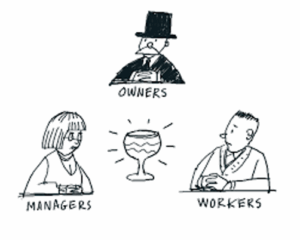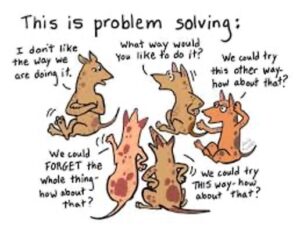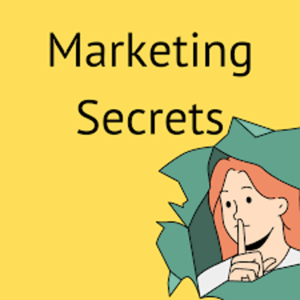Engagement and Strategic Indirectness
The Most Powerful Selling Secret of Them All

One of the 15 or 20 books I’ve been working on is tentatively titled Great Copy: What Makes Good Advertising Great!
It’s an ambitious book, gathering answers to that million-dollar question from the best* copywriters alive. (*Best, as in “most successful,” as in those who have in their careers generated the greatest volume of sales.)
I’m getting valuable assistance in writing the book from Mindy McHorse, the editor of The Barefoot Writer, hands-down the best e-magazine that exists on copywriting, copywriters, and the copywriting lifestyle. Mindy probably knows more of today’s top copywriters personally than anyone else. She’s also, through her many years of heading up The Barefoot Writer, extremely knowledgeable about the many different approaches, methods, and styles that today’s best copywriters employ in the breakthrough copy they continually produce.
The book is almost done. We are waiting for two or three more submissions, including one from me.
Because I wrote the Introduction, which touches on many of the ideas that are fully articulated in later chapters, I felt that an additional essay from me would be superfluous. But then, a week ago, I changed my mind.
I had spent several hours in a meeting reviewing a draft of a sales letter written for our Paris office. The meeting began well, and then happily morphed into great as our conversation started moving away from the specific problems and challenges of the manuscript we were critiquing to bigger, even universal, questions and answers about how copywriting is done, step by step.
We realized after the fact that we should have recorded the meeting so all the participants could have had a transcript of what was said. But since that didn’t happen, I did the next best thing and wrote a longish memo detailing the four main topics we had talked about.
Below is the first part of that memo. It addresses a question that is at once the most naïve and most important one that came up that day:
If there is a “most important” secret of persuasion – i.e., of copywriting success – what would that be?
Here is my best recollection of how I answered that question that day:
Yes, I think there is. At least there is an answer that works best for me. And that is this:
The most important thing you can do to persuade anyone of anything is to begin your conversation with them by scrupulously NOT selling it.
Almost anything is better than beginning with a sales pitch. You can entertain the prospect. You can inform the prospect. You can surprise the prospect. But never begin by selling the prospect.
The way to write great copy – i.e., to be a great salesperson – is to let the prospects sell themselves.
“Let the Prospects Sell Themselves” – What Does That Mean?

It means structuring the prospect experience so that not only does it not feel like a sales pitch, it isn’t even recognizable as a sales pitch.
How do you do that?
Very simply. You do anything but begin with a sales pitch in mind.
And How Do You Do That?
In our book Great Leads, John Forde and I (using my pen name Michael Masterson) suggested that of the hundreds of possible ways to begin a sales presentation, there are only six that work consistently, regardless of what you are selling, where and when you are making the sale, and to whom.
Three of these ways we defined as “direct.” And three we defined as “indirect.”
If you want to be an A-level copywriter… if you want to write advertising campaigns so successful people will pay you what you ask to write for them… if you want to leverage your copywriting skills to develop a multimillion-dollar direct marketing business that puts you at the top of the creative income ladder and protects you from the vicissitudes of whatever market you are in, you have to not just learn but become skillful at writing all six of these ways to approach potential customers.
You have to be able to use those sales leads as skillfully as you would have to use a hammer, a screwdriver, a saw, a drill, and a measuring tape if you wanted to be a master carpenter.
And if you want to go beyond that. If you want to get yourself up to the virtuoso level. If you want to become the one copywriter out of a hundred that can make not just a couple hundred thousand but a million bucks a year, you must master, really master, at least one indirect lead.
Why Is the Indirect Lead So Important?
Indirect leads can do things – subtle but enormously powerful things – that direct leads can’t.
For example:
* Indirect leads can start a sales conversation without any hint that a sales pitch will follow. The conversation begins, but the prospect doesn’t feel (and may not even know) that it will lead to a sales pitch. And because the prospect doesn’t feel like he’s about to be sold, the very natural psychological resistance he has to being sold does not arise. Instead, he reads or listens with an open mind and a willing heart.
* Indirect leads, due to their nature, provide the prospect with a quid for the quo (his attention). And they do so without stating it out loud. In telling a good story or sharing an amazing fact or revealing a secret, the copywriter is giving the prospect something of value – even if it’s only a few minutes of intrigue and entertainment.
To be more specific, an indirect lead will only work if it is intrinsically interesting and emotionally appealing. Learning how to write successful indirect leads is about learning how to figure out what story or secret or fact would be intellectually and emotionally engaging to the prospect.
When the copywriter does that, he creates a subconscious sense of appreciation and even gratitude in the prospect, which triggers a reciprocity impulse which can be satisfied by buying the product.
What Are the Ingredients of an Irresistible Indirect Lead?
Successful selling is not, as some copywriting pundits have suggested, based on appealing to the prospect’s most basic human instincts. (Fear and greed are the ones most commonly cited.)
Unless we are unfortunate enough to live in a war-torn or famine-wrecked country, most of our buying decisions are not made in the reptilian (instinct) brain, but in the limbic brain, the center of our emotions and the source of our emotional intelligence.

In this enormously complicated network of interlocking feelings, the strongest are seldom mentioned in books and articles about copywriting. I’m referring to such feelings as shame, embarrassment, jealousy, envy, loneliness, self-doubt, and so on – the kind of feelings that, however uncomfortable they may be for the prospect to discuss in public, are nonetheless enormously powerful factors in the process of making a buying “decision.” And those are the feelings that indirect leads are so good at stimulating.
For example…
* Indirect leads can arouse feelings that relate to how the prospect feels about himself and his situation in life, including thoughts about the cause of problems he has and the “enemy” that is behind them.
* Indirect leads can intensify negative ideas and prejudices the prospect has about social institutions (e.g., government, church, schools), as well as big, abstract ideas like war and peace, civil responsibility, gender roles, etc.
* Indirect leads can even create or enhance prejudicial thoughts and feelings the prospect either doesn’t have or doesn’t realize he has, and that can be done in real time – i.e., while the prospect is reading the lead!
I’ll make the point a second time because it’s 100% true and 100% fundamental and yet most people getting paid as marketers and advertising copywriters don’t really understand it: More than 90% of our buying decisions are complex. They involve not only the instincts that dwell in the reptilian brain, but the tempest of emotions living in the limbic brain, as well as the uncountable ethical and pragmatic commandments scattered around in the graveyard of the neocortical brain.
To write great leads, the copywriter must deal with that complexity. And he must do it – strongly and deeply – before the product or service being sold is even mentioned.
You can learn to become a master of the indirect lead by understanding the basics of each of the three kinds:
1. You can tell the prospect a story he would like to hear. (Example: Porter Stansberry’s “Railroad Across America package”)
2. You can make an intriguing statement or prediction. (Example: Porter’s “End of America” package)
3. You can tease him with a secret he’d like to know.
The benefits are obvious:
* You will get much less resistance from the prospect because you will not have triggered his built-in bias against being sold.
* Not only will you get less resistance, you will get a greater emotional buy-in.
* You will have a higher immediate response rate, and ultimately a higher customer lifetime value.
* You will have “trained” your prospect to respond to a specific kind of indirect lead, which you can be sure he will respond to in the future. And that will make subsequent sales to him easier.
Don’t Be Intimidated by the Challenge
I have been teaching, coaching, and revising direct response copy for more than 40 years. During that time, I’ve worked with at least a thousand copywriters – in large groups and small groups, but mostly one-on-one. I’ve worked with beginners, journeymen, and masters. And I’ve worked in dozens of different industries, selling everything from cars and aluminum siding to diet plans and vitamin pills, from watches and jewelry to televisions, computers, cellphones, golf clubs, toys, and tools, and from information products to investment newsletters and clubs.
And in every case, when the challenge was to grow the business quickly, the solution was always to locate the hottest product in the hottest sector of the industry and sell it through a marketing campaign that began with a sales approach based on either an emotionally compelling story, a an intriguing statement, or a secret.
Speaking of Copywriting Secrets…
Carline Anglade-Cole, one of the top copywriting coaches I know, has just published an e-book for freelance writers called How to Write Kick-Butt Copy: Straight Talk from a Million-Dollar Copywriter! It’s chock-full of sage but practical advice, like the following:
“Sometimes it’s just better to walk away – than to take a stand that will ultimately zap your time… resources… and energy. And ultimately mean nothing at the end.
“For example, if a client refuses to pay you the balance of an agreed-upon project. You could hound him with emails that don’t get answered. Mail him numerous “past due” notices or even threaten to sue him. You may or may not win.
“But what’s the real cost? How much time are you spending to get what’s rightfully yours? How much energy are you wasting complaining about the situation? How much did that time and energy ultimately cost you? And if you ever get the payment – what did you net after all that aggravation?
“Sometimes it’s better to walk away… cut your loss… and use your energy to find a better client who respects you and your time. Don’t allow standing on a principle to turn you into a petty person. Take the higher road – you’ll find fewer jerks there.”
You can read more about Carline’s book here.









